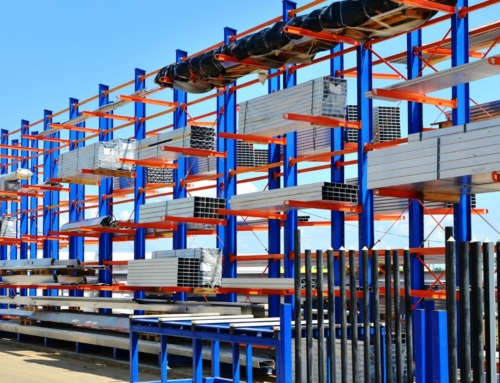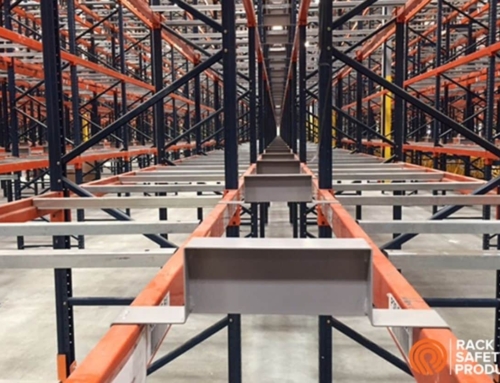Compliance with OSHA warehouse safety rules is critical, especially if you want to avoid crippling fines for your company. Compliance, on the other hand, is just as crucial and relevant to your warehouse’s safety. That is why the Occupational Safety and Health Administration (OSHA) has set warehouse rules and regulations. Without these principles, every warehouse (including yours) would be operating in the “wild west” in terms of safety and general warehouse rules and regulations. Here is what you need to know about how to adhere to OSHA warehouse safety guidelines.
Why Does My Facility Need To Be Compliant With OSHA?
In the United States, there are about 7,000 warehouses employing over 140,000 people, and these numbers are growing. The rate of fatal injuries caused by warehouse accidents is also greater than the national average for all industries. Within the bounds of the U.S., OSHA is in charge of enforcing occupational health and safety standards. For willful or persistent violations of OSHA warehouse guidelines, OSHA has the authority to levy fines of up to $30,000 on businesses.
You must take precautions and follow our OSHA warehouse safety advice in order to be compliant and prevent accidents in your warehouse. The general warehouse rules and regulations established by OSHA are an important element of the learning and training process. Because OSHA warehouse regulations and safety guidelines are continuously changing—updated rules and regulations are typical with OSHA—you’ll need a training program that will keep you up to date on the latest warehouse regulations and safety guidelines.
Pay Attention To These OSHA Warehouse Safety Issues
Workers must be aware of their surroundings and ready to respond to any hazards that develop in the warehouse. OSHA warehouse rules and regulations address a variety of hazards that can jeopardize workers’ safety. In warehouses, forklifts, slips and accidents, and falling objects are among the most common hazards. Each is linked to hundreds of injuries and deaths each year, but they may be avoided.
Slips and falls are common warehouse dangers that result in serious injuries. Slips and falls in a warehouse can happen for a variety of reasons, but the most common cause is a lack of basic training among warehouse workers. Another common warehouse hazard is an object falling from aerial lifts or warehouse shelves. When goods aren’t properly stacked or aren’t reinforced with such safety countermeasures, like side netting and racking post protectors, they can gravely harm or kill personnel. In addition to the risks listed above, warehouse workers face the following risks, which should be addressed in all warehouse laws and regulations:
- Repetitive motion injuries: Poor ergonomics can lead to repetitive motion injuries from lifting, reaching, pushing, and tugging inside a warehouse. Workers can learn how to conduct tasks on the workplace appropriately and prevent strenuous activities through training.
- Inadequate fire safety provisions: A variety of operating methods, as well as proper worker safety equipment, can help to prevent fire-related injuries and accidents.
- Improper product stacking: Improperly stacking products in a warehouse can reduce warehouse efficiency and put workers at risk. Improper product stacking can result in unstable products that pose a risk of crushing workers.
- Failure to wear personal protective equipment: Personal protective equipment protects employees from a variety of hazards, including respiratory, impact, and crushing threats. The lack of respiratory protection for warehouse workers is one of the most frequently cited offenses.
What Are the Most Frequently Cited OSHA Regulations for Warehouse Safety?
Employees who operate huge equipment and handle products on foot face a variety of hazards in warehouses. On this warehouse safety checklist, the remaining citations in terms of general warehouse rules and regulations are as follows:
- Hazard communication: This standard deals with chemical dangers and how they are communicated to workers.
- Electrical wiring methods: This standard includes the grounding, wiring, and insulation of electrical equipment. It entails splicing and temporary wiring.
- Electrical system design: This section discusses the general requirements for developing electrical systems in terms of safety.
- Guarding floor and wall apertures and holes: This standard addresses properly protecting employees from hazards posed by floor and wall openings and holes.
- Exits: This guideline emphasizes the need of creating emergency exits for employees.
- Respiratory protection: This standard deals with the establishment and maintenance of respiratory protection. In terms of OSHA warehouse requirements, this is a vital safety issue.
- Lockout/Tagout: This standard establishes the minimum performance criteria for hazardous energy control during machine and equipment repair and maintenance.
- Portable fire extinguishers: This part covers the installation, operation, maintenance, and testing of portable fire extinguishers.
OSHA warehouse laws require all businesses to have a crisis plan in place in the event of an emergency. It’s impossible to predict when calamity will strike. Having an executable, easy-to-follow emergency plan ready to go is one of the finest warehouse safety ideas. Keep a warehouse safety checklist on hand in case of an emergency. Everything from fire and electrical dangers to severe weather measures and more is covered.
OSHA Warehouse Safety: What Types of PPE Are Necessary for Warehouse Workers?
Employers are responsible for supplying warehouse workers with adequate personal protective equipment (PPE) based on the hazards present on the jobsite. The following protective equipment may be required on a jobsite:
- Eye protection: Safety glasses and other eye and face protection are essential for warehouse workers who undertake tasks where foreign items could enter their eyes or strike them in the face. Employees who work with concrete, hazardous chemicals, or are exposed to electrical risks must wear appropriate eye and face protection.
- Foot protection: Many warehouse employees require shoes or boots with slip- and puncture-resistant bottoms. This footwear can also assist workers in reducing the risk of crushing their toes as a result of falling objects or heavy machinery.
- Hand protection: Work gloves should be worn according to the task. For example, warehouse employees who are exposed to electrical hazards should wear insulated gloves and sleeves.
- Head protection: For warehouse workers who are exposed to falling objects, bumps to the head caused by fixed objects, or electrical risks, hard helmets are necessary.
- Hearing protection: For warehouse employees who are exposed to loud noises, earplugs or earmuffs are essential PPE.
- Respiratory protection: Respirators protect warehouse employees from harmful substances and are required in workplaces where there is insufficient oxygen or dangerous compounds in the air.
We hope you’ve enjoyed our article on the best ways to adhere to OSHA warehouse safety guidelines! If you’re looking to purchase premium racking safety products to upgrade your racking’s usefulness, be sure to reach out to Rack Safety Products today!







